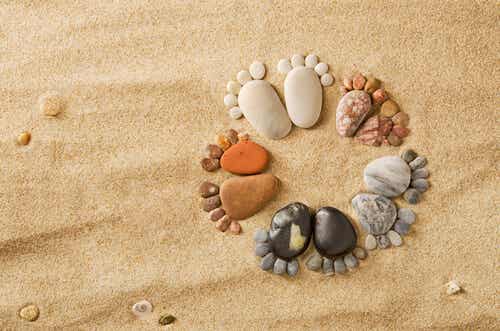
Written and verified by the psychologist GetPersonalGrowth.
Last update: December 14, 2021
The psoas, also called the soul muscle, is the deepest muscle in the muscular system and the one that contributes most to the stability of the human body. It helps us to maintain balance, joint mobility, range of motion and the proper functioning of the organs located in the abdominal area.
This muscle, which connects the spine and legs, helps us stand up and allows us to raise our legs so that we can walk. A psoas in good condition promotes correct body posture and offers a settlement to the internal structure of the body.
Eastern cultures have named it muscle of the soul because of its relationship to the system central nervous system, as being connected to the diaphragm is related to breathing.
We know that the respiratory rhythm has a two-way relationship with our emotional state, so it becomes the messenger of our psychological state. It is therefore the muscle responsible for helping us oxygenate the mind.
The psoas or muscle of the soul is considered the mouthpiece of emotions, those that manifest themselves both as "butterflies in the stomach" and as "the stomach upside down".
The Psoas Tension: The Emotional Health Pose
Stress, combined with the lifestyle that accompanies it, can tire the psoas by making it shorten or harden. This fact produces back pain and low back pain, digestive problems, painful menstruation, etc.
If the state of stress becomes chronic, the psoas ends up shortening and hardening, affecting our physical and emotional state, generating great discomfort that ends up exhausting the body.
In reverse, as the stronger and more flexible the "muscle of the soul", the more vitality we will issue, as energy can flow freely through the bones, muscles, joints, organs, etc.
Exercises to relax the soul muscle
To work on the flexibility and strengthening of this muscle, we can perform different exercises or stretches. As seen in the images, the muscle starts in the T12 vertebra, continues through the five lumbar vertebrae and connects to the top of the femur.
Disciplines such as yoga focus on working this muscle, as it helps release unnecessary tension and flow through liberating body movements that help reconnect with your own needs.
Let's see some of the exercises that allow us to stretch, strengthen and relax the muscle of the soul. However, before we begin to describe them, we must know that each position must be held for a few seconds and must be repeated for both legs. It is advisable to perform them every day and better in the morning.
1. Lunge
- Stand with your legs apart at shoulder distance.
- Keep your back straight, it will help you contract your abdominal muscles.
- Step forward with your right foot.
- Lower the left knee towards the floor and slide it back until the whole leg is stretched.
- Place your hands on your right knee and hold the position for a few seconds.
- Calmly return to the starting position and perform the same exercise with the other leg.
Variant: lunge with element. It involves performing the same exercise but placing a stool, chest or chair at the knee, in order to support it and bring all the weight of the body forward so that it is possible to stretch the left leg. Repeat with the other leg.
2. Spinal lengthening
- Lie on your back on a mat or mat.
- Position your arms perpendicular to the body, in the shape of a cross. The palms must touch the ground.
- Bring the right knee to the left, rotate the hip and place it on the ground. The leg should be at a right angle.
- The left leg must not be flexed.
- Remain in the position for a few seconds and repeat with the other leg.
3. Knee-to-chest stretch
- Lie on your back on a mat or mat.
- Lift your right knee towards your chest and hold it with both hands. Apply some pressure to bring it closer.
- Do not lift your right foot off the ground.
- Remain in the position for a few seconds and repeat with the other leg.
Creating the habit of performing these simple exercises every day will help your physical and psychological balance. Taking a day to fill ourselves with psychological oxygen is something we cannot "put off", because our well-being is something we should never put off. Our life is closely connected with it.
Main image by Claudia Tremblay


























